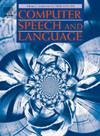扩大非自回归翻译的词汇选择瓶颈
IF 3.4
3区 计算机科学
Q2 COMPUTER SCIENCE, ARTIFICIAL INTELLIGENCE
引用次数: 0
摘要
近年来,非自回归模型在自然语言处理(NLP)领域得到了广泛的应用,并逐渐进入了语音识别、计算机视觉等领域的研究主体。为了提高翻译模型的译码效率,提出了非自回归翻译(Non-autoregressive translation, NAT),通过对所有标记进行独立且同步的预测。为了降低原始数据的复杂性,知识蒸馏(KD)是利用自回归翻译(AT)训练NAT模型的第一步。在本研究中,我们首先揭示了原始数据和KD数据之间的差异导致在预测低频词时出现词汇选择错误。然后,我们通过利用三种无体系结构的方法来弥补差距,而不引入任何计算成本:(1)模型级别,我们引入了一个额外的Kullback-Leibler分歧项,该分歧项是通过比较NAT模型的词汇选择和原始数据中嵌入的词汇选择而得出的;(2)并行数据水平,其中我们通过提出原始预训练和反向KD训练来重新激活低频信息;(3)单语数据层,我们将双语原始数据的知识和新的单语数据的知识转移到NAT模型。我们在两种先进的NAT架构上对广泛使用的NAT基准(即WMT14英语-德语和WMT16罗马尼亚语-英语)进行了实验。结果表明,本文提出的方法能够显著提高翻译质量,减少低频词的翻译错误。大量的分析表明:(1)这些方法产生的译文包含更多的低频词;(2)这些技术可以有效地一起使用,以进一步回忆在标准KD中丢失的有用信息;(3)扩大单语数据时,BLEU得分持续提高,而进一步扩大单语数据时,这一趋势不成立。为此,我们在另外三个不同语言和尺度的数据集(即WMT17汉语-英语、WMT19英语-德语和WAT17日语-英语)上验证我们的方法,建立了一个新的NAT基准。我们将发布数据、代码和模型,希望能对这一领域的研究起到重要的推动作用本文章由计算机程序翻译,如有差异,请以英文原文为准。
Widening the bottleneck of lexical choice for non-autoregressive translation
Recently, non-autoregressive models have enjoyed great popularity in natural language processing (NLP) communities, and slowly crept into the main body of research such as speech recognition and computer vision. Non-autoregressive translation (NAT) has been proposed to improve the decoding efficiency of translation models by predicting all tokens independently and simultaneously. To reduce the complexity of the raw data, knowledge distillation (KD) is the preliminary step for training NAT models by leveraging autoregressive translation (AT). In this study, we first reveal that the discrepancy between the raw and the KD data leads to lexical choice errors on predicting low-frequency words. Then we bridge the gap by exploiting three architecture-free approaches without introducing any computational cost: (1) Model Level, where we introduce an extra Kullback–Leibler divergence term derived by comparing the lexical choice of NAT model and that embedded in the raw data; (2) Parallel Data Level, where we reactivate low-frequency information by proposing raw pre-training and reverse KD training; (3) Monolingual Data Level, where we transfer both the knowledge of the bilingual raw data and that of the new monolingual data to the NAT model. We conduct experiments on widely-used NAT benchmarks (i.e. WMT14 English–German and WMT16 Romanian–English) over two advanced NAT architectures. Results demonstrate that the proposed approaches can significantly and universally improve translation quality by reducing translation errors on low-frequency words. Extensive analyses demonstrate that (1) these approach generates translations that contain more low-frequency words; (2) these techniques can be used together profitably to further recall the useful information lost in the standard KD; (3) enlarging the monolingual data consistently improves the BLEU scores, while this trend does not hold when further scaling the monolingual data. To this end, we establish a new NAT benchmarks by validating our approaches on three additional datasets varying from languages and scales (i.e. WMT17 Chinese–English, WMT19 English–German and WAT17 Japanese–English). We will release data, code and models, which we hope can significantly promote research in this field.2
求助全文
通过发布文献求助,成功后即可免费获取论文全文。
去求助
来源期刊

Computer Speech and Language
工程技术-计算机:人工智能
CiteScore
11.30
自引率
4.70%
发文量
80
审稿时长
22.9 weeks
期刊介绍:
Computer Speech & Language publishes reports of original research related to the recognition, understanding, production, coding and mining of speech and language.
The speech and language sciences have a long history, but it is only relatively recently that large-scale implementation of and experimentation with complex models of speech and language processing has become feasible. Such research is often carried out somewhat separately by practitioners of artificial intelligence, computer science, electronic engineering, information retrieval, linguistics, phonetics, or psychology.
 求助内容:
求助内容: 应助结果提醒方式:
应助结果提醒方式:


